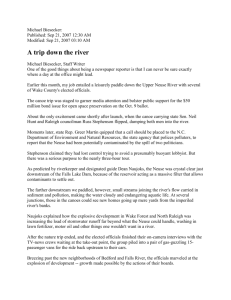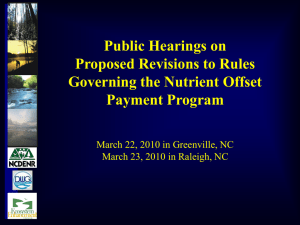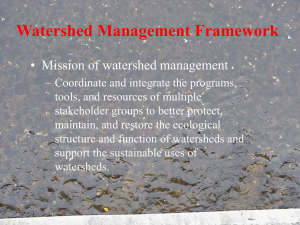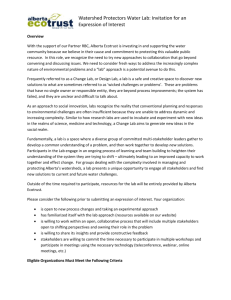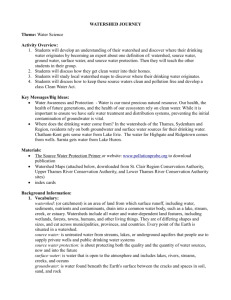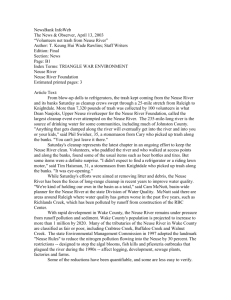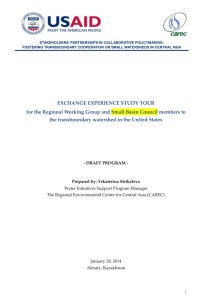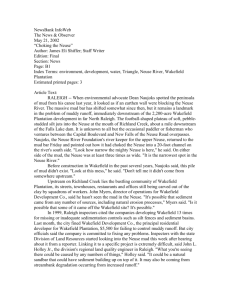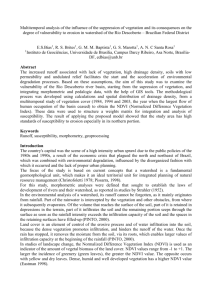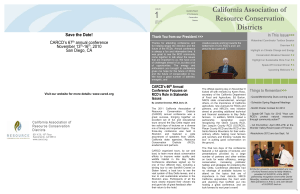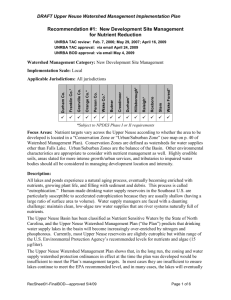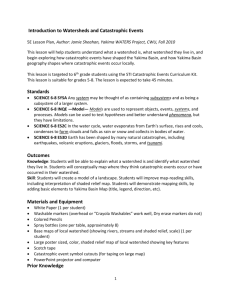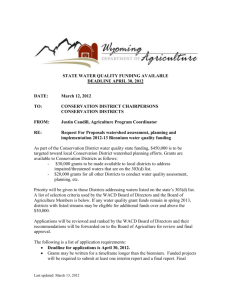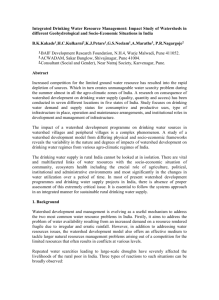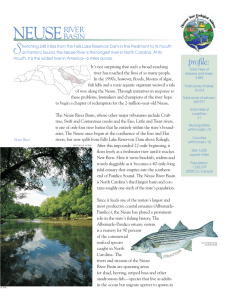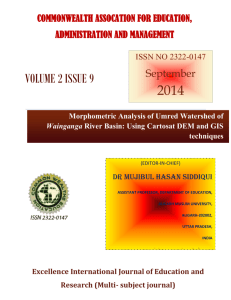Mehan Handout #3 - Source Water Collaborative
advertisement
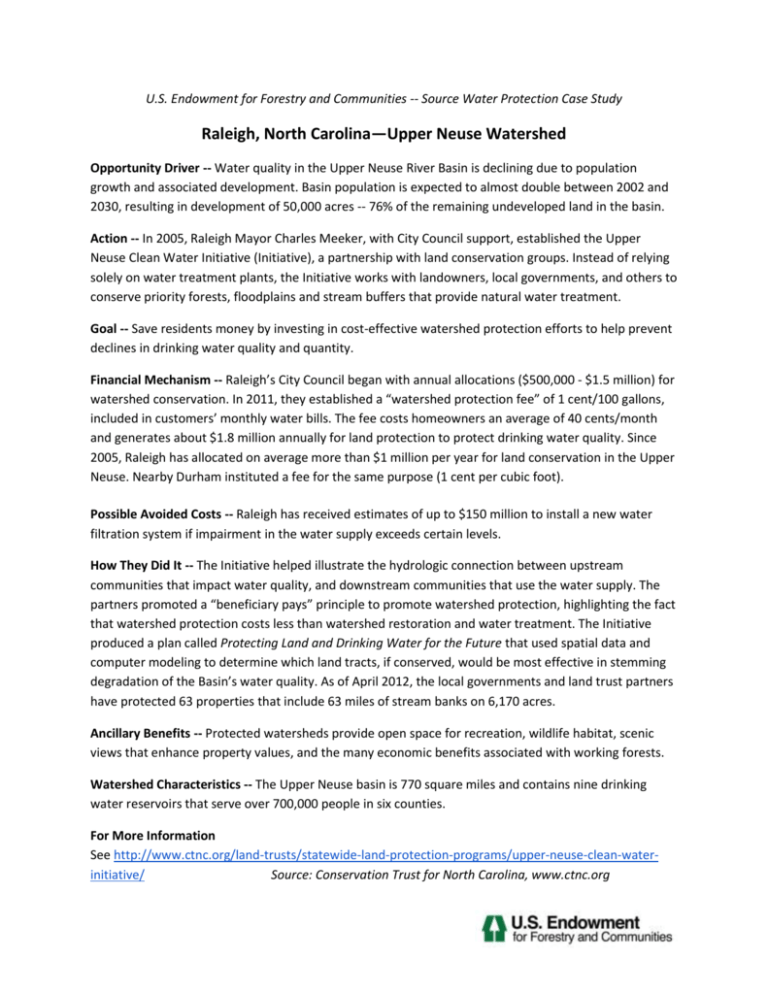
U.S. Endowment for Forestry and Communities -- Source Water Protection Case Study Raleigh, North Carolina—Upper Neuse Watershed Opportunity Driver -- Water quality in the Upper Neuse River Basin is declining due to population growth and associated development. Basin population is expected to almost double between 2002 and 2030, resulting in development of 50,000 acres -- 76% of the remaining undeveloped land in the basin. Action -- In 2005, Raleigh Mayor Charles Meeker, with City Council support, established the Upper Neuse Clean Water Initiative (Initiative), a partnership with land conservation groups. Instead of relying solely on water treatment plants, the Initiative works with landowners, local governments, and others to conserve priority forests, floodplains and stream buffers that provide natural water treatment. Goal -- Save residents money by investing in cost-effective watershed protection efforts to help prevent declines in drinking water quality and quantity. Financial Mechanism -- Raleigh’s City Council began with annual allocations ($500,000 - $1.5 million) for watershed conservation. In 2011, they established a “watershed protection fee” of 1 cent/100 gallons, included in customers’ monthly water bills. The fee costs homeowners an average of 40 cents/month and generates about $1.8 million annually for land protection to protect drinking water quality. Since 2005, Raleigh has allocated on average more than $1 million per year for land conservation in the Upper Neuse. Nearby Durham instituted a fee for the same purpose (1 cent per cubic foot). Possible Avoided Costs -- Raleigh has received estimates of up to $150 million to install a new water filtration system if impairment in the water supply exceeds certain levels. How They Did It -- The Initiative helped illustrate the hydrologic connection between upstream communities that impact water quality, and downstream communities that use the water supply. The partners promoted a “beneficiary pays” principle to promote watershed protection, highlighting the fact that watershed protection costs less than watershed restoration and water treatment. The Initiative produced a plan called Protecting Land and Drinking Water for the Future that used spatial data and computer modeling to determine which land tracts, if conserved, would be most effective in stemming degradation of the Basin’s water quality. As of April 2012, the local governments and land trust partners have protected 63 properties that include 63 miles of stream banks on 6,170 acres. Ancillary Benefits -- Protected watersheds provide open space for recreation, wildlife habitat, scenic views that enhance property values, and the many economic benefits associated with working forests. Watershed Characteristics -- The Upper Neuse basin is 770 square miles and contains nine drinking water reservoirs that serve over 700,000 people in six counties. For More Information See http://www.ctnc.org/land-trusts/statewide-land-protection-programs/upper-neuse-clean-waterinitiative/ Source: Conservation Trust for North Carolina, www.ctnc.org
